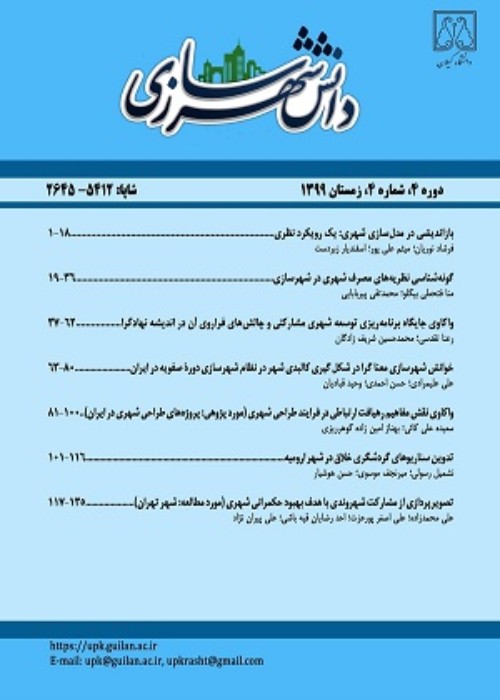An Assessment of Public Space in Urban Neighborhoods With Emphasis on The Concept of Time (Case Study: Golsar and Sagharisazan Neighborhoods in the City of Rasht)
In current societies, the speed of changes increases over time making new neighborhoods more similar to each other. One of the reasons for this is the lack of attention to the concept of time and its influence on space. In the past, time was intertwined with place and had a significant impact on shaping the unique identity of neighborhoods. Under the influence of globalization, time has become so compressed that its ability to create identity has diminished. The problem is how to recognize the temporal components in public spaces of neighborhoods To recognize and evaluate the temporal components of urban public spaces, aligned with the temporal context of neighborhoods, and provide strategies and planning solutions for temporal planning to improve the quality of urban public spaces in neighborhoods is the main objective of this research. Two neighborhoods, one traditional (Saghresazan) and one modern (Golsar) in the city of Rasht, were selected as samples, and the temporal indicators were analyzed using an analytical-exploratory research method. Initially, information was gathered through document and library studies, observations, expert interviews, sampling, and questionnaires (simple random sampling with a sample size of 380 determined by Cochran's test). The data were summarized using a five-point Likert scale and then analyzed and evaluated using the Analytic Hierarchy Process (AHP) and its combination with the SWOT matrix. Temporal components (year, season, month, day, and hour), alongside with conventional influential components in space (physical, functional, cultural and social, communicative, visual, and perceptual) have impacts on the functioning of urban public spaces in neighborhoods. The manifestation of temporal components in old and new neighborhoods is different, and its components in each neighborhood is aligned with its temporal context and differs from other neighborhoods, and managing temporal structures has an impact on improving the quality of neighborhood public spaces. The results of this research indicate that each neighborhood has its own specific times and it is necessary to consider its specific temporal framework for future planning to enhance the quality of public spaces in the targeted neighborhoods.
- حق عضویت دریافتی صرف حمایت از نشریات عضو و نگهداری، تکمیل و توسعه مگیران میشود.
- پرداخت حق اشتراک و دانلود مقالات اجازه بازنشر آن در سایر رسانههای چاپی و دیجیتال را به کاربر نمیدهد.



